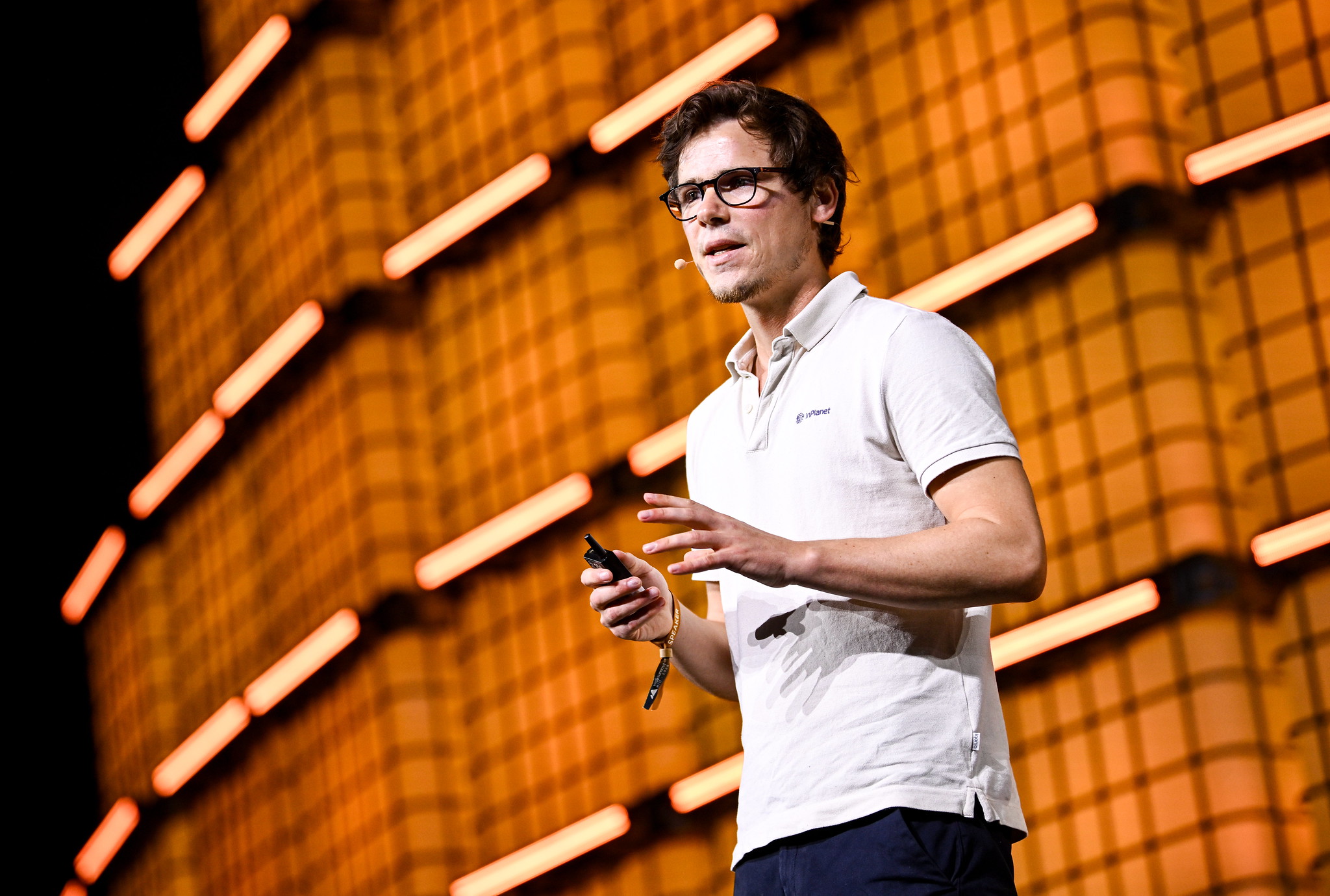It’s been a minute since Web Summit Rio 2025, and I wanted to reflect on my experience. Stepping onto the Centre Stage in Rio de Janeiro, I felt the pulse of innovation and the collective determination of thousands of attendees. As the CEO of InPlanet, I had the privilege to speak at two sessions, and both were nothing short of electrifying.
Embracing the Energy of Rio
As a founder of a climate startup rooted in Brazil, I’m no stranger to the country’s atmosphere, but Rio is something else entirely. From the moment I walked into the venue, the energy was electric. Founders, investors, and changemakers from around the world had converged with a shared mission: scaling solutions for people and the planet. The sense of urgency and hope was undeniable. For anyone in tech and climate, this was the place to be.
I kicked off my time at the Web Summit on the “Clean, Green, and Built to Scale” panel with Julia Marisa Sekula of Terradot, another enhanced rock weathering (ERW) pioneer, moderated by former BBC journalist Gareth Mitchell. We explored how climate innovation, especially ERW, can turn cutting-edge science into scalable impact. One message kept coming through: start with the ground beneath our feet.
The next day, I took the Centre Stage as part of Web Summit’s “Breakout Startups.” What a ride.
Panel Highlights: Rocks and not trees, our path to carbon removal
In our panel, we explored the promise of tech-driven carbon removal, especially the potential of Enhanced Rock Weathering (ERW) and Brazil’s unique ability to scale it. I shared a surprising fact: while most people think of trees as nature’s main carbon sink, over 99% of all historical CO₂ removal has come from rock weathering. In short, Earth’s original carbon removal engine isn’t forests, it’s rocks.
That insight drives InPlanet’s mission. We accelerate this natural process by spreading finely crushed rock on farmland to draw CO₂ from the air. Thanks to Brazil’s ideal climate and soil, ERW can work in years instead of millennia. The impact doesn’t stop at the climate, our data indicates up to a 30% boost in crop yields and a 50% reduction in fertilizer use. That’s carbon removal with benefits for farmers, food systems, and the planet.
Gareth Mitchell brought curiosity and momentum to the conversation, while Julia Sekula shared powerful insights on how they scale ERW. It was a panel of like-minded innovators, aligned in the mission to deliver science-backed solutions for a livable future.

Breakout Startups Showcasing Innovation
The next day, I found myself on Centre Stage as part of Web Summit’s “Breakout Startups”.
I was particularly inspired by fellow entrepreneurs like Matias Muchnick, the CEO of NotCo, who also took to the Centre Stage. Matias’s journey of reinventing food with AI and plant-based innovation showed that climate tech comes in many flavors (sometimes literally!). Hearing how he asked “Why Not?” and then built a unicorn company tackling food sustainability was a highlight for me. It underscored that from alternative proteins to carbon removal, we innovators are driven by a shared mission to create a sustainable future.

The Web Summit audience was incredibly engaged, investors, corporate leaders, and even curious students came up afterward to ask questions. Many were amazed to learn that Brazil alone has over 200 million hectares of farmland and mountains of waste rock that could potentially remove gigatons of CO₂ when put to use.
For an entrepreneur, there’s nothing quite like real-time feedback from such a diverse audience. One moment that stuck with me was a question from an investor in the audience: “Can CDR tech-based solutions really scale to make a dent in climate change?” This opened the door for me to talk about our vision. I shared our upcoming milestone, aiming to achieve our first megaton of CO₂ removal by 2027, and then put it in perspective. Even if we hit that goal, it’s just the beginning. To meet global climate targets, the world will need to remove 10+ gigatons of CO₂ per year in the coming decades. That means the carbon removal industry must grow around 50% year over year, something no sector has ever done before. The room fell silent hearing that figure. It was a sobering reminder of the challenge ahead, and I followed up with my conviction that the time to act is now.

Key Takeaways on Climate Tech and Scale
By the end of Web Summit Rio, a few clear takeaways emerged for me:
1. Climate Tech Is Mainstream The packed rooms and buzzing expo floor made it evident that climate tech has moved from the fringe to center stage. Investors and buyers are actively seeking solutions that are both high-impact and scalable.
2. Scalability with Co-Benefits Solutions like Enhanced Rock Weathering can scale massively and deliver co-benefits. Permanent carbon removal that also rejuvenates soils and supports farmers is no longer a theory, it’s happening now. This resonated strongly with carbon credit buyers I spoke with, who are keen on credits that offer verified climate impact plus social and environmental upsides.
3. Collaboration Fuels Innovation: Whether it was comparing notes with Julia from Terradot, or hearing Matias Muchnick’s insights on leveraging AI for sustainability, I realized that we’re all part of an interconnected ecosystem. We share an aligned mission, and by cheering each other on (and sometimes joining forces), we can accelerate the impact. The community vibe at Web Summit, especially among fellow climate tech founders, was truly motivating.
4. This is Brazil’s Moment to Lead As the world accelerates efforts to scale carbon dioxide removal (CDR) solutions, Brazil stands out as a country uniquely positioned to lead. With its rich biodiversity, agricultural strength, and increasing influence in global climate policy, Brazil has both the resources and the responsibility to set a new global standard for high-integrity carbon solutions.
A key advantage lies in Brazil’s clean energy mix. Approximately 70 percent of the country’s electricity comes from hydropower, and up to 90 percent is generated from renewable sources overall (McKinsey, Reuters). This makes Brazil one of the greenest energy producers in the world. By powering CDR technologies with low-carbon electricity, Brazil significantly increases the net climate benefit of each tonne of CO₂ removed. Whether through forest restoration or cutting-edge technologies like direct air capture, this energy profile enhances the credibility and integrity of the carbon credits produced in the region.

Brazil is also one of the most biodiverse countries on Earth, home to an estimated 15 to 20 percent of all known species (UNEP). This ecological richness enables nature-based CDR approaches such as reforestation, agroforestry, and regenerative agriculture. These solutions not only sequester carbon but also support ecosystems, strengthen climate resilience, and benefit local communities.
These combined strengths place Brazil in a unique position to influence the global carbon removal agenda. The country has the opportunity to demonstrate that climate solutions can be both scalable and equitable, rooted in scientific rigor and local impact. With active efforts already underway to ensure that Brazil’s natural assets are managed responsibly and that innovation supports both people and the planet, this moment presents a turning point.
This is Brazil’s opportunity to lead. Not just as a participant in global climate action, but as a frontrunner in building the future of carbon removal.
Gratitude and Forward Momentum
I leave Rio with a profound sense of gratitude. Thank you to Web Summit Rio for shining a spotlight on climate innovation, and to my fellow panelists and speakers, and many others, for your passion and insights. Huge thanks as well to everyone who attended our sessions, asked questions, and offered support. The engagement from investors and carbon credit buyers in the crowd gives me hope that the capital and market demand will be there to scale these solutions.
This experience reinforced why we do what we do at InPlanet. We’re not just fighting climate change in a lab or on a farm, we’re part of a global movement that is alive and thriving in Rio. As I am back in Germany, I’m carrying the energy of Rio with me. The future of climate tech is bright green and accelerating fast, and I’m more committed than ever to turn that momentum into action.
If you were at Web Summit Rio or are interested in the intersection of climate tech and scalable solutions, I’d love to hear your thoughts and continue the conversation. Let’s keep pushing forward, together.